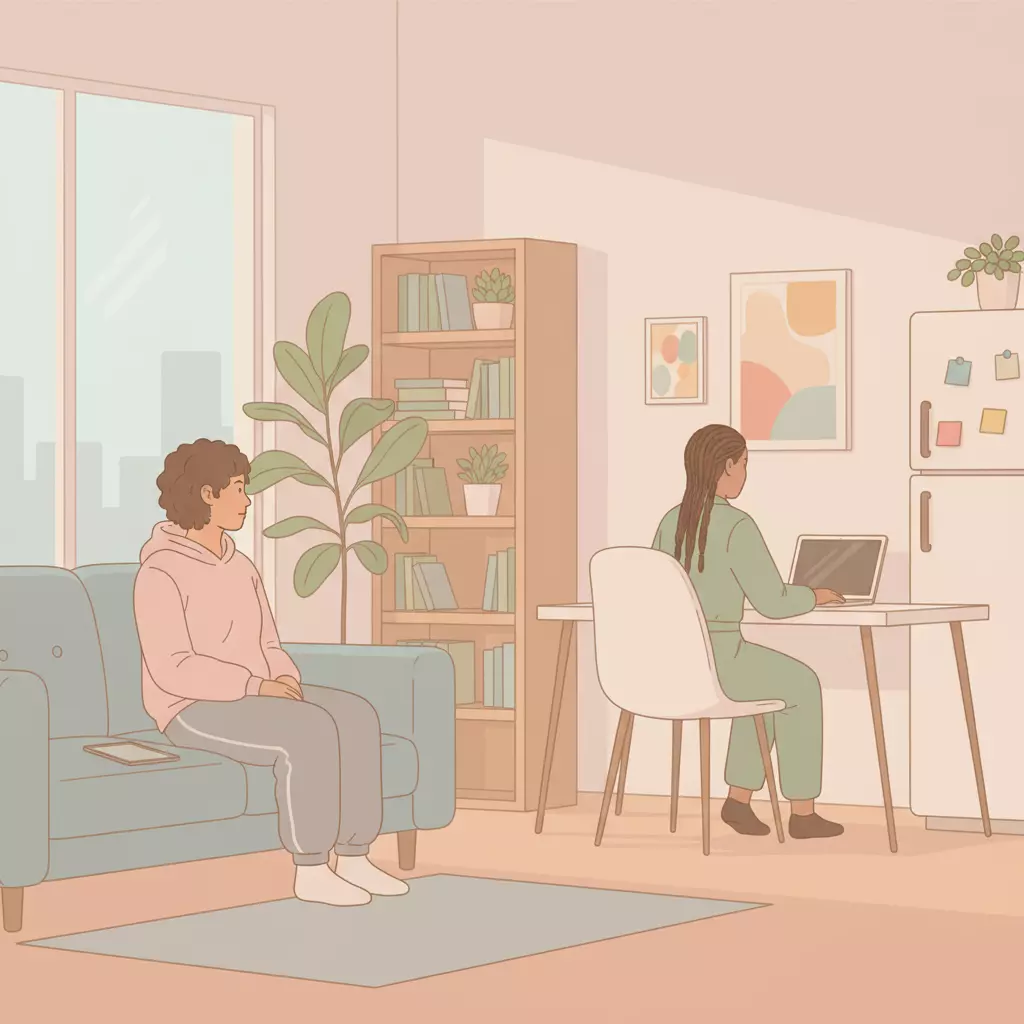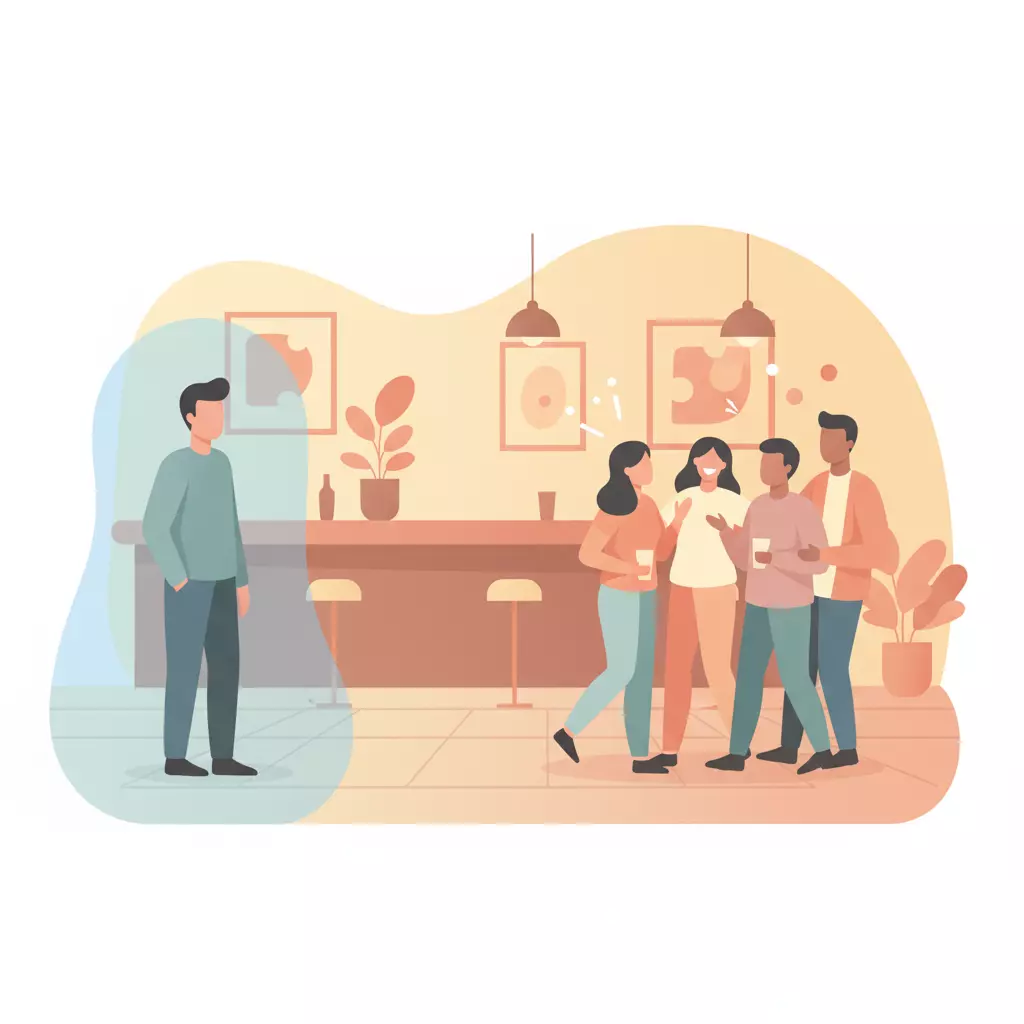Table of Contents
Year Title: The Breakup Blueprint: How to Let Go, Heal, and Move On
Chapter Title: No Contact Isn’t a Game – It’s a Healing Strategy
Sub-chapter: Special Cases & Exceptions
Category: Exceptions
Publish Date: 2025-09-19 21:30:00
Imagine this: you walk into the office, coffee in hand, and there they are—your ex, already at their desk. The same laugh you used to love drifts over from a conversation with another colleague. Your stomach flips, not because you want them back, but because the wound is still fresh. And yet… you’ve got a 10 a.m. meeting together. This is the tightrope: heartbreak that doesn’t get the courtesy of space. For anyone working with an ex after a breakup, this is the daily reality—personal pain colliding with professional demands.
Healing doesn’t always happen in silence. Sometimes it happens under fluorescent lights, with HR policies, and with email threads you’d rather not send.
When No Contact Isn’t Possible
Normally, “no contact” means silence, distance, a clean break. But what if you still work together? Then the goal shifts. It’s no longer about absence—it’s about structure.
You don’t need to disappear—you need to redraw the lines so you can keep your job, your dignity, and your peace of mind.
Problem A: How to Stay Professional When Working With an Ex After a Breakup
The hardest part of working alongside an ex is resisting the pull of old patterns—chatting like you used to, or bristling at their every word.
Research shows that the reason you stay in contact with an ex shapes how well you cope:
- Practical or civility reasons → healthier outcomes
- Unresolved feelings → prolonged pain
Practical tip: Treat every interaction as strictly functional.
- Stick to project updates, quick emails, or calendar invites
- Keep communication short, clear, and professional
- Avoid personal topics and emotional tones
This isn’t coldness—it’s protection. You’re carving out a professional lane that lets you work without reopening the wound every five minutes.

Problem B: When HR Needs to Step In
Breakups don’t just hurt hearts—they bleed into performance. Studies show people in the middle of separation often face:
- More stress
- Lower productivity
- Mood swings that spill into work
This is where HR can help. They’re not there to fix heartbreak, but they can make the work environment less volatile.
If sharing an office feels unbearable, or if constant meetings spike your anxiety, request adjustments such as:
- A seating change
- Neutral third-party mediation
- Adjusted reporting lines or responsibilities
Frame your request in terms HR understands: productivity, focus, professionalism. That way, you’re protecting your emotional space without looking “personal” in a professional setting.

No Contact Isn’t a Game – It’s a Healing Strategy
Let’s examine the No Contact strategy in: Science & Psychology, Planning it, Digital Hygiene, Relapses-Cravings & Crashes, Special Cases & Exceptions… and Signs that it’s working +What comes next.
Tap here to read more →
Problem C: Finding Room to Heal in Shared Spaces
Healing doesn’t mean you stop hurting the moment you clock in. Some days, you’ll still feel the sting.
But research reminds us that breakups, even when messy, can spark growth:
- Resilience
- Independence
- Emotional clarity
Working with an ex after a breakup can become its own training ground—if you approach it with intention.
- Use “structured contact”: limit interactions to small, predictable, defined moments
- Build your emotional care system outside the office (friends, therapy, self-care)
- Allow the workplace to become a place where you prove your strength, not just feel your pain
Final Word
Moving on while sharing space is never easy, but it is possible.
Each boundary you practice is a step toward reclaiming yourself. Slowly, what was once a minefield becomes just another office, another desk, another day’s work.
The heart mends—even here.
FAQ
Q1. How do you set healthy boundaries when working with an ex after a breakup?
Focus on keeping all communication work-related and professional. Avoid personal conversations, limit unnecessary interaction, and use email or messaging tools instead of casual chats when possible.
Q2. Should I talk to HR if working with my ex feels uncomfortable?
Yes. HR can help mediate and adjust work arrangements, such as seating changes or shifting responsibilities, to reduce unnecessary tension.
Q3. Can you still heal emotionally if you have to work with your ex every day?
Yes. Healing in this situation comes from structured contact—keeping interactions short, respectful, and purely professional while seeking emotional support outside work.
Q4. What etiquette should I follow to stay professional around an ex at work?
Be courteous, respectful, and consistent. Avoid gossip, emotional outbursts, or oversharing with colleagues. Treat your ex like any other coworker.
Scientific Sources
-
Wanberg, Csillag, & Duffy (2023): After the break-up: How divorcing affects individuals at work
Key Finding: Employees going through divorce reported higher stress, negative moods, lower job performance, and poorer health. Work engagement improved after separation finalized.
Why Relevant: Shows how personal breakups directly spill into workplace performance, reinforcing the need for HR support and boundaries.
https://onlinelibrary.wiley.com/doi/10.1111/peps.12547 -
Zhao, Griffith, Gilath, & Martinez (2018): Staying friends with ex-romantic partners: Predictors, reasons, and outcomes
Key Finding: Remaining in contact with an ex for practical or civility reasons led to healthier outcomes, while contact due to unresolved desires created worse emotional consequences.
Why Relevant: Explains why structured, professional-only contact with an ex at work is healthier than letting emotions drive interactions.
https://www.researchgate.net/publication/318184933_Staying_friends_with_ex-romantic_partners_Predictors_reasons_and_outcomes_Friendship_with_ex-romantic_partners -
Tashiro, Kansky, & Frazier (2017): Making Sense and Moving On: The Potential for Individual Growth Following a Breakup
Key Finding: Despite distress, many individuals report personal growth such as independence, confidence, and resilience following a breakup.
Why Relevant: Supports the idea that even while working with an ex, healing and self-growth are possible when boundaries are maintained.
https://pmc.ncbi.nlm.nih.gov/articles/PMC6051550/
- The Healthy Truth: When Limited Contact After Breakup Heals Better Than No Contact

- No Contact After Short Relationships: Essential Healing or Overkill?

- Working With an Ex After a Breakup: Smart Boundaries & Positive HR Strategies

- Queer Breakup Boundaries: Choosing Limited Contact or No Contact in Overlapping Communities

- Transgender Safety Planning: Essential Steps to Stop Harassment and Doxxing

- Lesbian Breakup Shared Housing: Healing Rules & Smart Exit Plans

- Gay Breakups: Breaking Free from Painful Comparison Loops in Your Scene

- Women’s Guide to Co-Parenting No Contact Rules: Healing Boundaries & Handover Scripts

- Men & Breakups: The Powerful Truth About No Contact in Small Towns and Shared Friend Groups

Leave a Reply